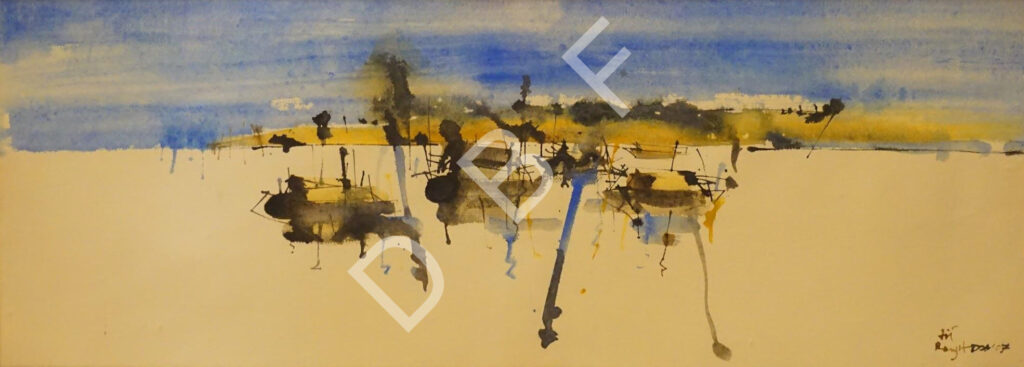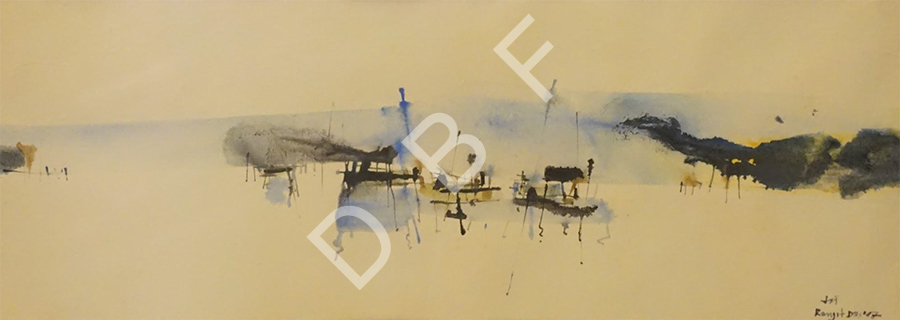“Shonnashi” which translates to ‘the monk’, is a 2003 semi-realistic painting by Ranjit Das. In his painting, the monks of rural Bangla come into focus. On a seemingly neutral background, he paints the monks in their saffron attire. In his minimal but purposeful approach, he combines prose with the poetry of life and sings us a story that is so familiar and yet untold. In his painting, the schematic language and space both symbolize two opposing yet complimenting characters of life. He uses colors, space, and line work and creates a balance between spontaneity and his own artistic value.

Ranjit Das
Ranjit Das was born in Tangail, Bangladesh, in 1956. He graduated from the Bangladesh College of Arts and Crafts in 1975 and did his MFA from the M S University of Baroda, India, in 1981. His name spread when he received the grand award at the Asian Art Biennale Bangladesh in 1995. His other prizes include the Best Award (Painting) in the 8th Young Artists Art Exhibition (1988), Honourable Mention Awards in the 9th National Art Exhibition, Dhaka (1990); the 5th Asian Art Biennale (1991), and the 2nd Award, in the 18th International Miniature Show, Florida, USA (1993). He retired as a teacher from the Teacher’s Training College in Dhaka and continues to work in his studio in Narayanganj.
Shonnashi


Din Mojur, Working Class
“Din Mojur”, also known as Working class is an exploration of the man and his substance, his behavior and nature, his past, present, and future. It is a closer look at the social order, societal and economic position of working-class people. In this 2001 painting, he highlights the rural masses and their life and expresses his discontent and social position. He recreates the dilemma of living in a society highly infected with classism, social injustice. He paints it blue and wraps us in the blanket of nothingness. It is a question, a challenge to the ever-existing social and class system.
Artist Art Style
Ranjit Das became famous for his uncomfortable subject choice and surrealistic-impressionist approach. His compositions derive strength from the strategic juxtaposition of tension and balance represented by lines, panels, and figurations. Even when there are associations of dejection in the composition, guarded optimism and empathy shine through.






